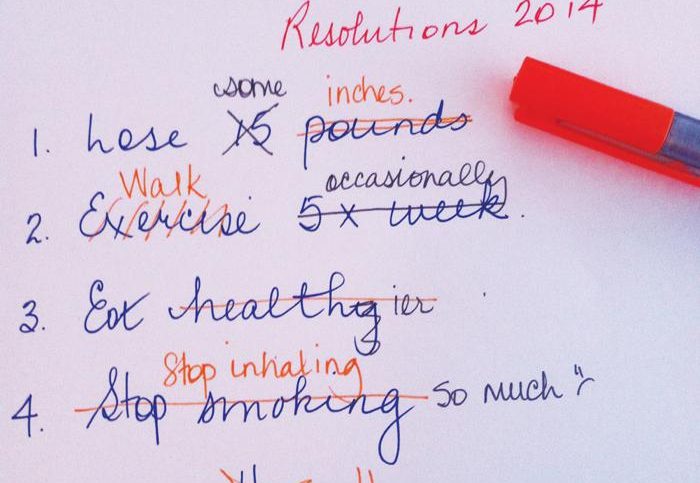Every year, about a gazillion people make resolutions to change. There’s something about the idea of beginning anew on January 1st that causes people to reflect on their lives, their problems, their values and their dreams. Encouraged by the finality of ‘Auld Lang Syne’ and the anticipation of the big ball dropping in Times Square, they take pen in hand and make a list of the ways that the New Year will be better.
I remember one year my brother circulated his New Year’s Resolutions. The list read something like this: 1. Sleep in more. 2. Switch from cigarettes to chewing tobacco. 3. Avoid eating anything green. 4. Become a couch potato champion. When we ridiculed him for his ‘stupid’ list, he just grinned and said, “At the end of the year, let’s see who’s kept their list and who hasn’t.”
According to Forbes Magazine, only 8 percent of those gazillion people actually keep their resolutions. We don’t suddenly become more motivated with a new year – at least not in any sustainable way. We make our resolutions, hit the ground running on January 2nd, and crater (on average) by about January 20th. Some determined peeps make it all the way to the end of February before the “magic” wears off.
Alas, there is no magic in January 1st.
The New Year is a great time to begin to make major changes because it’s a significant time marker to the whole world—It feels like a new beginning. But those changes are not going to happen because it’s January 1st. To be one of those 8 percent who ‘turn over a new leaf’ successfully, stop thinking in terms of magic, and start thinking in terms of planning and the long haul.
Use A.I.M. to set your goals. Is what I want to do Achievable? Is what I want to do Intentional? Is what I want to do Measurable? If you can’t answer ‘Yes’ to all those questions, your resolution is doomed. Revise and reframe them until you can say ‘Yes’ to all three. Secondly, be reasonable and realistic in deciding what to change this year. Quitting smoking, getting a degree, finding a new job, losing weight, and getting fit are all great goals, but all in the same year? Could some of them even overlap (Can one get fit and still be smoking?)? If you aren’t sure about what could be reasonably accomplished, spend a session with a life coach. It’ll be worth the hour’s fee. Thirdly, set yourself up to be successful. Benjamin Franklin said, “By failing to prepare, you are preparing to fail.” What support do you need? Who will be your front row fans? What professional help could make the difference between success and failure? Who will you ask to hold you accountable for working your plan? What will be the reward for yourself or celebration with others of the milestones along the way? The magical thinking that helps 92 percent of those gazillion peeps is in believing that the turn over from one year to the next somehow gives them something they didn’t have yesterday – a plan for success.
A New Year’s resolution in 2013 got me off the couch and outside doing the Couch-to-5K program (available for iPhone and Android). As of January 2nd, I’ve run 1000K. That was my only resolution (getting fit) for the year and I took advantage of all the support and encouragement I could find. Now success is its own motivation and reward. I’m proud of what I’ve accomplished (and there’s a very significant bit of bling in my future by way of celebration).
If you haven’t made any resolutions for this year, it’s not too late. The best time to start was January 1st. The next best time is today. May 2014 be as you plan and so much more than you hope for. Happy New Year!
Dr. Susannah-Joy Schuilenberg is a Canadian psychologist traveling the world on a busman’s holiday. Bossy from birth, compassionate by choice, and funny by accident, Dr. Susannah writes about anything that catches her attention. Visit www.soorcenter.com or follow her on Twitter @drsusannah.











